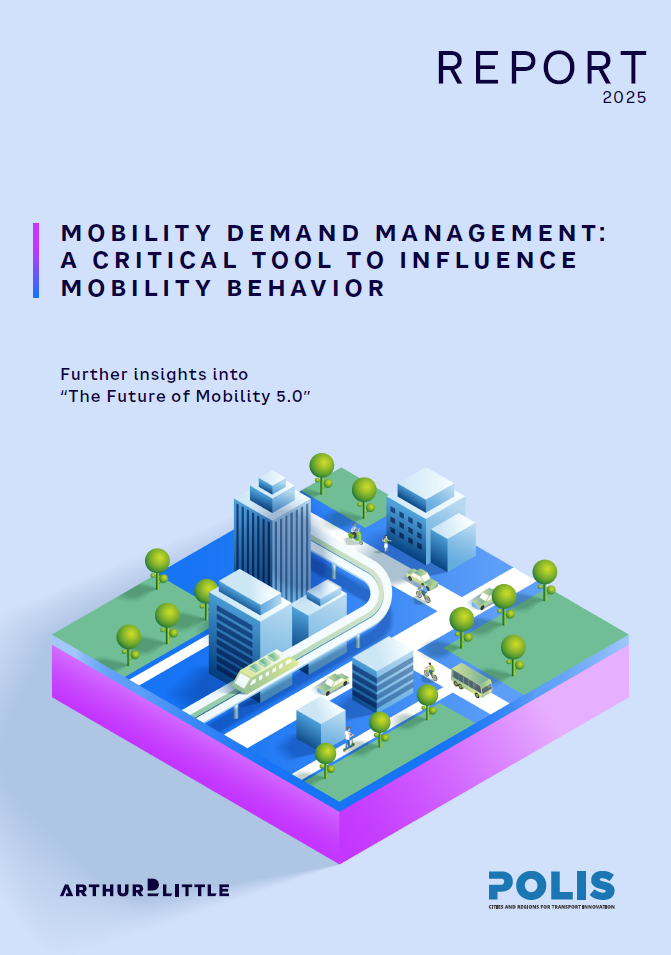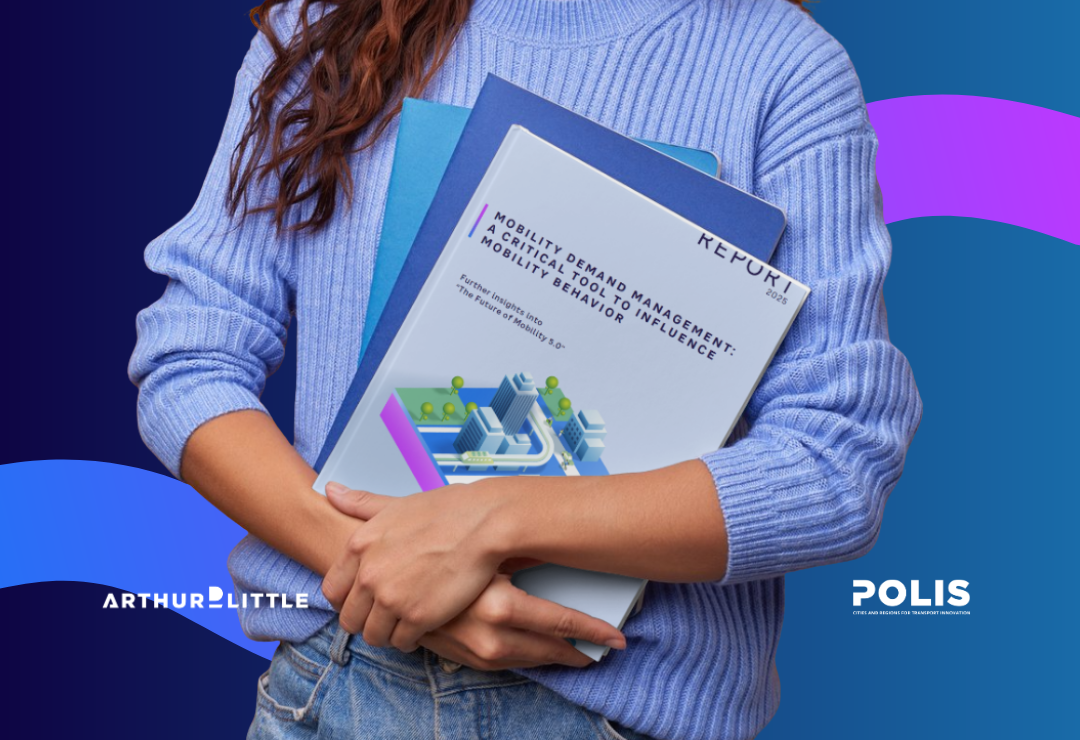Arthur D. Little and POLIS explore the critical role of Mobility Demand Management in new report
As cities grow, so do the challenges of congestion, pollution, and urban sprawl. Traditional approaches, like simply expanding roads or transit capacity, no longer suffice. Today, the focus is shifting toward smarter, more sustainable ways of managing mobility, and a new report by Arthur D. Little (ADL), in collaboration with POLIS, highlights Mobility Demand Management (MDM) as a transformative tool to influence urban travel behaviour.
 Building on insights from the 2024 report 'The Future of Mobility 5.0', this follow-up study delves deeper into the practical application of MDM. The concept is straightforward yet powerful: instead of only adding infrastructure, cities can optimise existing transport systems by shaping how, when, and why people travel. By encouraging alternatives to private cars—such as public transit, shared mobility, cycling, and walking—MDM reduces congestion, lowers emissions, and enhances urban livability.
Building on insights from the 2024 report 'The Future of Mobility 5.0', this follow-up study delves deeper into the practical application of MDM. The concept is straightforward yet powerful: instead of only adding infrastructure, cities can optimise existing transport systems by shaping how, when, and why people travel. By encouraging alternatives to private cars—such as public transit, shared mobility, cycling, and walking—MDM reduces congestion, lowers emissions, and enhances urban livability.
Read the full 'Mobility Demand Management: A critical tool to influence mobility behaviour' report here.
Why MDM matters
Modern urban environments face a critical challenge: reliance on private vehicles. This leads to longer commute times, increased pollution, and the need for more roads and parking spaces, which further constrain city life. MDM addresses these challenges head-on by redistributing travel demand across sustainable modes of transport. Through a combination of regulatory measures, pricing policies, land-use planning, and travel incentives, cities can influence behaviour and optimise the use of existing infrastructure, reducing what experts sometimes call 'traffic evaporation' without adding new roads.
Real-world examples demonstrate the tangible benefits of MDM. The Paris 2024 Olympics, for instance, showed how well-designed mobility demand strategies can deliver measurable impact at scale, improving accessibility and quality of life for residents while ensuring smooth traffic flow for visitors.
Looking ahead
The future of MDM lies in harnessing technology and data analytics to deliver targeted, responsive, and personalised solutions. Emerging trends include:
- Data-driven planning: Continuous monitoring and adaptation of mobility strategies to local conditions maximise effectiveness and minimise unintended consequences;
- Autonomous vehicles (AVs): AVs can improve road space utilisation, reduce parking demand, and integrate efficiently with public transport and shared mobility services;
- Mobility-as-a-Service (MaaS): Integrated platforms simplify access to multiple transport modes, encouraging a shift from private cars to shared and public options;
- Digital circulation and geofencing: Smart, technology-enabled traffic management enables cities to dynamically regulate vehicle access, particularly in sensitive zones, reducing emissions and improving flow.
By combining these innovations with traditional MDM strategies, cities can create a more agile, efficient, and sustainable mobility system—one that adapts in real time to residents’ needs and environmental goals.
A holistic approach to urban mobility
MDM emphasises that true progress requires a balance between infrastructure and behaviour. It is not just about roads and vehicles: it is about shaping choices, reducing dependence on private cars, and encouraging sustainable, accessible transport for all. While some interventions may involve upfront costs, the long-term benefits—improved air quality, reduced congestion, better public health, and enhanced urban life—far outweigh the investments when carefully implemented.
The report underscores the importance of tailored strategies. By combining regulatory measures, infrastructure enhancements, and behavioural incentives, cities can unlock the full potential of MDM and build urban mobility systems that are both efficient and equitable.
About Arthur D. Little
Arthur D. Little has been at the forefront of innovation since 1886. We are an acknowledged thought leader in linking strategy, innovation and transformation in technology-intensive and converging industries. We navigate our clients through changing business ecosystems to uncover new growth opportunities. We enable our clients to build innovation capabilities and transform their organisations.
Our consultants have strong practical industry experience combined with excellent knowledge of key trends and dynamics. ADL is present in the most important business centres around the world. We are proud to serve most of the Fortune 1000 companies, in addition to other leading firms and public sector organisations.
For further information, please visit www.adlittle.com or www.adl.com.
